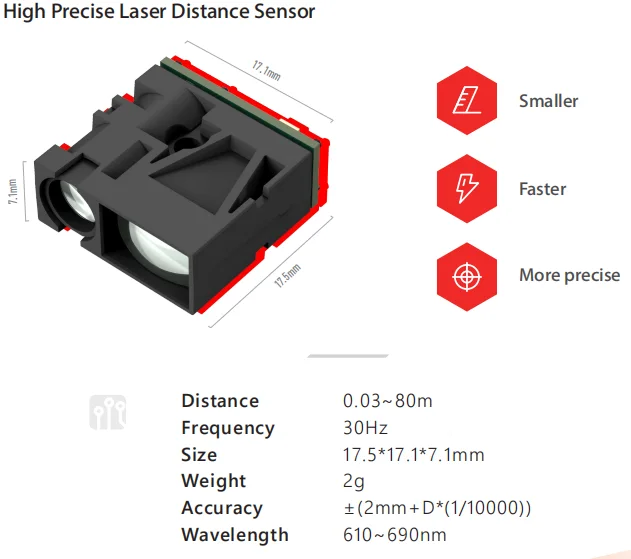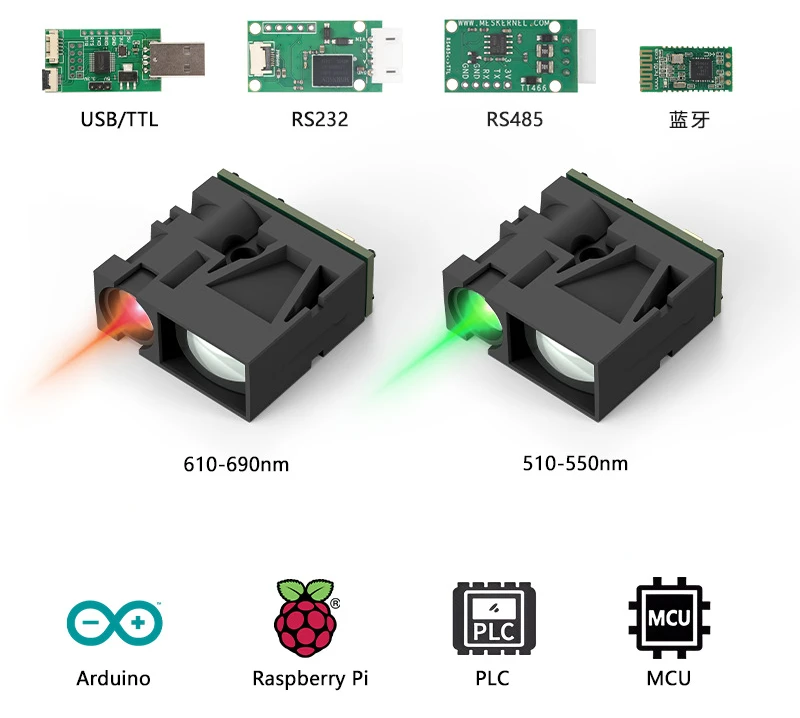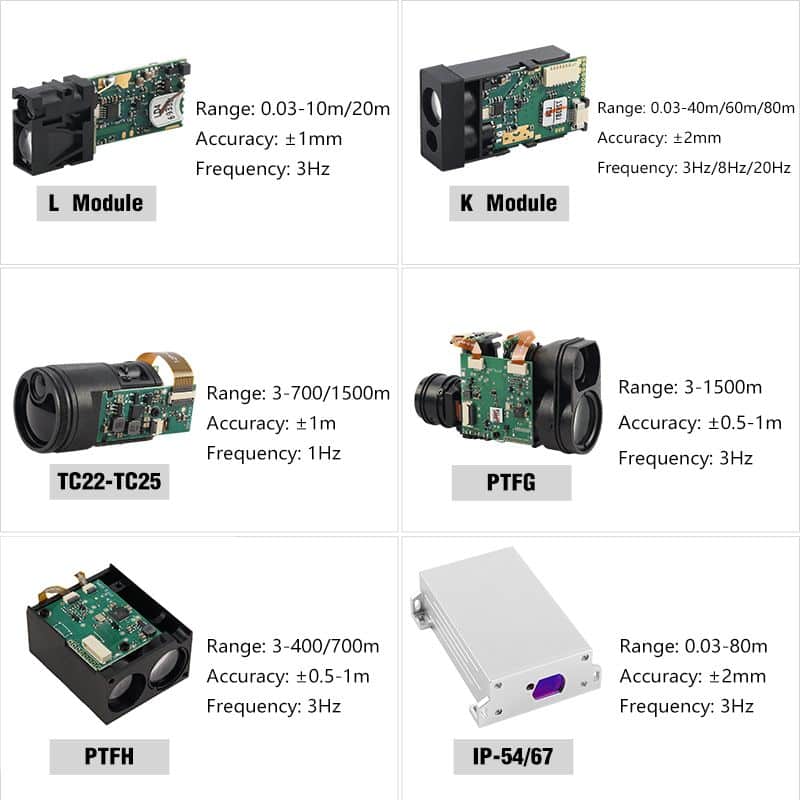W rozwijającym się świecie automatyzacji, robotyki i inteligentnego wykrywania czujnik odległości wyróżnia się jako podstawowy komponent. Niezależnie od tego, czy budujesz maszynę przemysłową, czy prototypujesz za pomocą mikrokontrolera, wybór odpowiedniego modułu - i zrozumienie jego protokołów komunikacyjnych - ma kluczowe znaczenie.
1. Co to jest moduł czujnika odległości?
Moduł czujnika odległości to zintegrowany system czujników przeznaczony do pomiaru odległości między czujnikiem a obiektem docelowym przy użyciu technologii takich jak laser (LiDAR), ultradźwiękowe, podczerwone lub Czas lotu (ToF). Moduły te są często dostarczane w pakietach z komponentami interfejsu do bezpośredniej integracji z płytami rozwojowymi lub systemami przemysłowymi.
Aby uzyskać przegląd różnych typów czujników, zapoznaj się z naszym przewodnikiem na temat Czujniki odległości analogowe i ToF.
2. Wspólne interfejsy komunikacyjne
Wybór odpowiedniego modułu rozpoczyna się od zrozumienia interfejsów komunikacyjnych, które wpływają na kompatybilność, zasięg i wydajność w czasie rzeczywistym.
UART (uniwersalny asynchroniczny odbiornik/nadajnik)
- Przypadek użycia: Idealny do programowania opartego na mikrokontrolerach (np, Arduino, STM32).
- Plusy: Proste okablowanie, szeroko obsługiwane.
- Przykład: Moduł pomiaru odległości UART.
RS485
- Przypadek użycia: Automatyka przemysłowa, gdzie wymagany jest duży zasięg i odporność na hałas.
- Plusy: Sygnalizacja różnicowa, obsługa konfiguracji multi-drop.
- Przykład: Laser przemysłowy Wyszukiwarka zasięgu czujniki z wyjściem RS485 (patrz tabela poniżej).
Magistrala CAN
- Przypadek użycia: Motoryzacja, robotyka i systemy wymagające komunikacji z wieloma urządzeniami.
- Plusy: Solidny, obsługuje obsługę błędów, znormalizowany w kontroli przemysłowej.
| Interfejs | Idealny dla | Warstwa protokołu | Maksymalna długość kabla |
|---|
| UART | Arduino, Raspberry Pi | Podstawowy Serial | ~1 metr |
| RS485 | Sterowniki PLC, czujniki przemysłowe | Półdupleks, różnicowy | ~1200 metrów |
| CAN | Pojazdy, roboty przemysłowe | Multi-master, oparty na arbitrażu | ~40 metrów |
3. Integracja z popularnymi płytami rozwojowymi
Moduły czujników odległości można łatwo zintegrować z różnymi platformami. Oto jak to zrobić:
Przykład Arduino
Wiele modułów odległości UART i I2C można podłączyć bezpośrednio do płytek Arduino. Biblioteki takie jak NewPing i Adafruit VL53L0X upraszczają integrację.
#include
SoftwareSerial mySerial(10, 11); // RX, TX
void setup() {
Serial.begin(9600);
mySerial.begin(9600);
}
void loop() {
if (mySerial.available()) {
int distance = mySerial.read();
Serial.println(odległość);
}
}
Przykład Raspberry Pi
Moduły z wyjściem UART lub USB działają w trybie plug-and-play na Raspberry Pi przy użyciu Pythona serial moduł. Przykłady stworzone przez społeczność można znaleźć na forach Raspberry Pi.
4. Wybór odpowiedniego modułu: Rozwój a zastosowanie przemysłowe
| Przypadek użycia | Cechy, których należy szukać | Zalecany moduł |
|---|
| Majsterkowanie / Hobby | Interfejs UART/I2C, kompaktowy, o niskim poborze mocy | LDL |
| Robotyka | Wysoka dokładność, ToF lub LiDAR, dane w czasie rzeczywistym | LDL-S |
| Przemysłowy | RS485/CAN, stopień ochrony IP67, duży zasięg, wytrzymała obudowa | PTFS-P4 |
Wskazówka: Zawsze należy sprawdzić zgodność z poziomem logicznym systemu (3,3 V vs 5 V) i wymaganym zakresem pomiarowym.
5. Tabela porównawcza wyboru modułów



 czujnik odległości analogowy wyjście
czujnik odległości analogowy wyjście
6. Wnioski
Zrozumienie modułów czujników odległości wykracza poza wybór marki - wymaga rozważenia protokołów, środowiska i metod integracji. Niezależnie od tego, czy używasz modułu czujnika odległości RS485 do trudnych warunków przemysłowych, czy modułu pomiaru odległości UART do prototypowania, dokonanie właściwego wyboru może przyspieszyć sukces projektu.
🔗 Dalsze lektury i zasoby